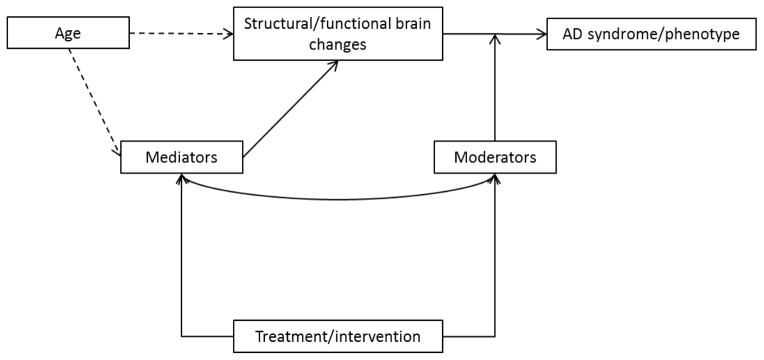Figure 1.

Framework for understanding contributors to the Alzheimer’s disease phenotype. By defining AD as a syndrome, we are able to identify structural and functional brain changes that predict onset of symptoms, severity of symptoms, and progression of symptoms. Scrutiny of structural and functional alterations associated with the AD syndrome can occur at multiple levels using a variety of disciplines (e.g., cell biology, neuroimaging) and across species. The extent to which age is a necessary or causative factor in AD has not been established entirely but it is noteworthy that symptom onset occurs after age 65 for the vast majority of “sporadic” forms of the disease, which comprise over 90% of AD cases. Mediating factors—the mechanisms that underlie the relevant structural and functional brain changes or through which aging impacts those changes—and moderating factors—those factors that mitigate the effects of relevant structural and functional brain changes on their clinical outcomes—can be identified as reasonable targets for treatment or prevention strategies. The model stipulates that treatment or prevention strategies target factors that ultimately impact the AD syndrome either directly (i.e., through the mediators) or indirectly (i.e., through the moderators). The line connecting the moderators and mediators is to indicate that these factors may interact with each other and are not necessarily independent.
